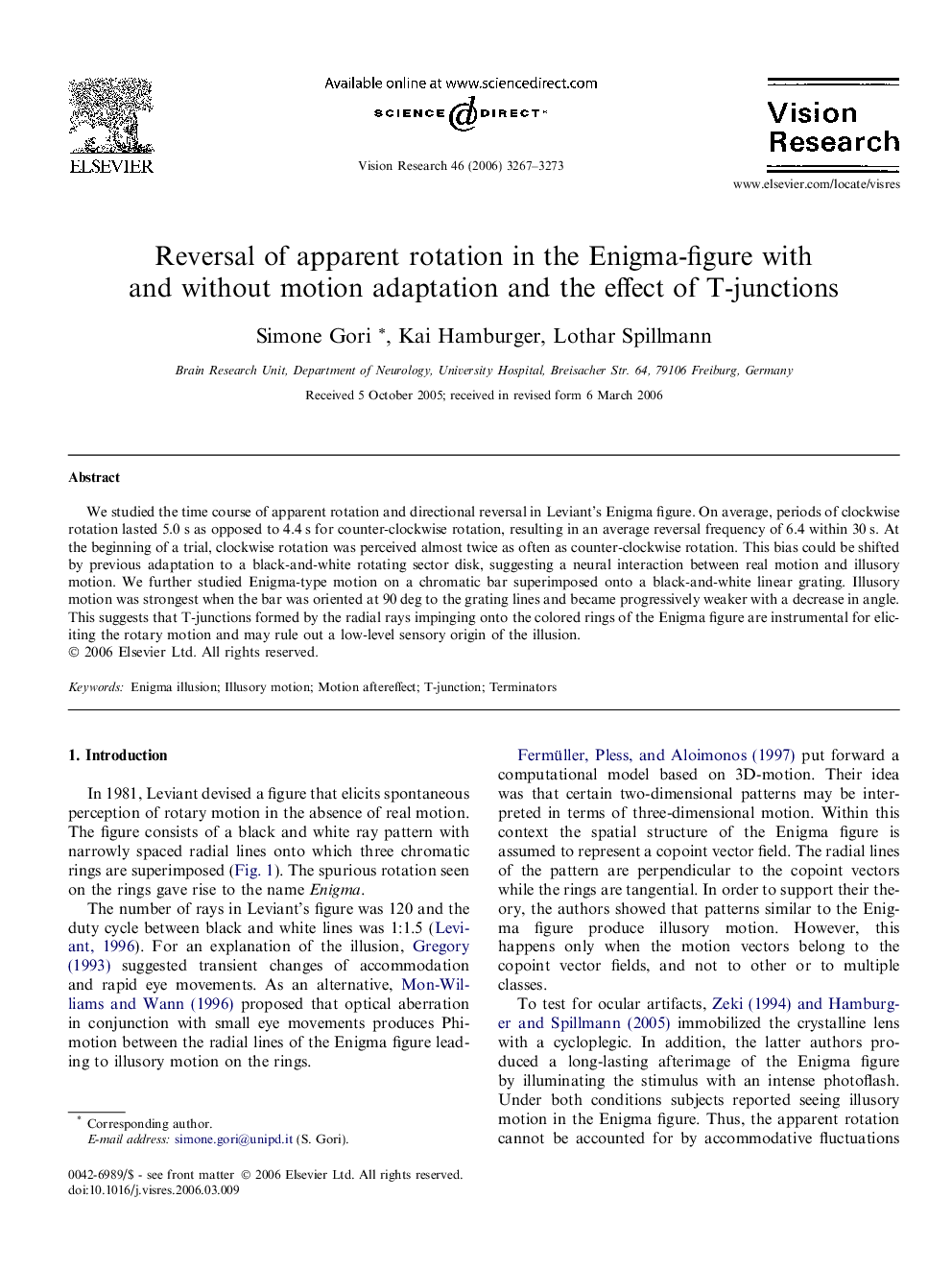| Article ID | Journal | Published Year | Pages | File Type |
|---|---|---|---|---|
| 4035521 | Vision Research | 2006 | 7 Pages |
We studied the time course of apparent rotation and directional reversal in Leviant’s Enigma figure. On average, periods of clockwise rotation lasted 5.0 s as opposed to 4.4 s for counter-clockwise rotation, resulting in an average reversal frequency of 6.4 within 30 s. At the beginning of a trial, clockwise rotation was perceived almost twice as often as counter-clockwise rotation. This bias could be shifted by previous adaptation to a black-and-white rotating sector disk, suggesting a neural interaction between real motion and illusory motion. We further studied Enigma-type motion on a chromatic bar superimposed onto a black-and-white linear grating. Illusory motion was strongest when the bar was oriented at 90 deg to the grating lines and became progressively weaker with a decrease in angle. This suggests that T-junctions formed by the radial rays impinging onto the colored rings of the Enigma figure are instrumental for eliciting the rotary motion and may rule out a low-level sensory origin of the illusion.
